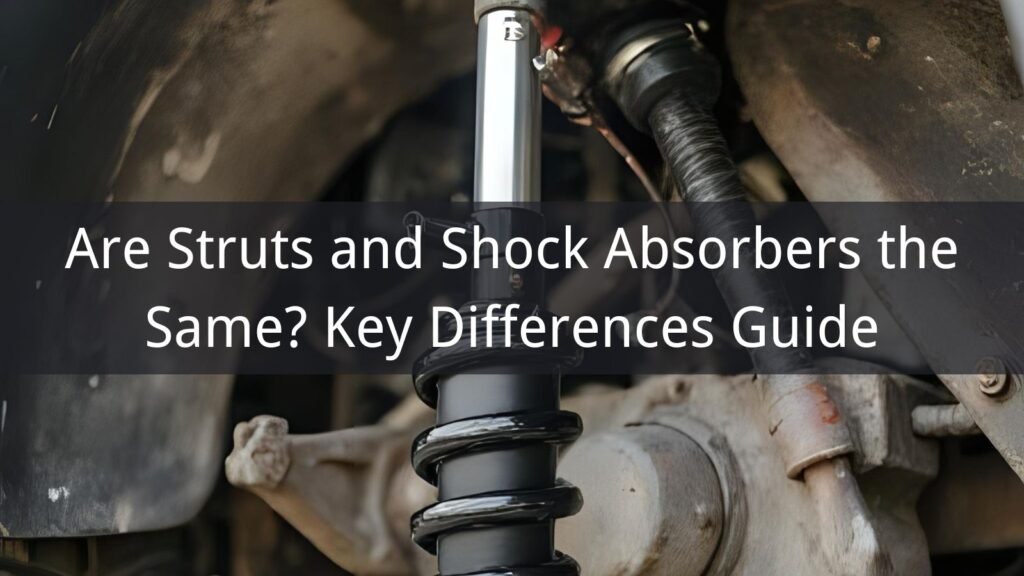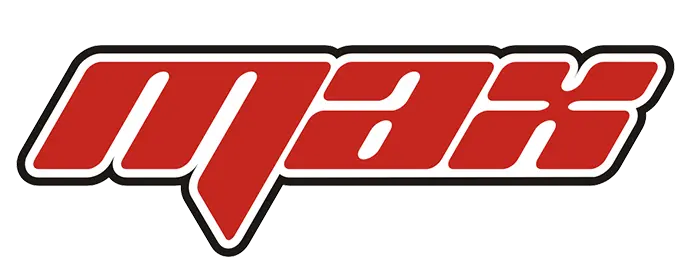
While struts and shock absorbers serve similar damping functions, they are distinct suspension components with different designs, mounting methods, and structural roles. Understanding these differences is crucial for proper vehicle maintenance, replacement decisions, and suspension system optimization.
Table of Contents
Fundamental Differences Between Struts and Shocks
The question “are struts and shock absorbers the same thing” requires understanding the distinct roles these components play in vehicle suspension systems. While both provide damping control, they differ significantly in construction, mounting, and structural function within the suspension geometry.
Shock absorbers are dedicated damping devices that work in conjunction with separate springs and suspension components. Struts, conversely, are complete structural assemblies that integrate damping, spring support, and suspension geometry control into a single unit. This fundamental difference affects everything from installation complexity to replacement costs.
Modern vehicles typically use one system or the other, though some employ struts in front with shock absorbers in the rear. Understanding which system your vehicle uses is essential for proper maintenance and performance optimization.
| Feature | Shock Absorbers | Struts |
|---|---|---|
| Primary Function | Damping only | Damping + structural support |
| Spring Integration | Separate components | Integrated coil spring |
| Mounting Points | Two connections | Three+ connections |
| Replacement Complexity | Simple | Complex (spring compression required) |
| Cost Range | Lower | Higher |
Shock Absorber Design and Function
Traditional shock absorbers, also called dampers, focus exclusively on controlling suspension oscillations. These components mount between the vehicle body and suspension arms using simple attachment points that allow for easy replacement and maintenance.
Construction Elements
Shock absorbers consist of several key internal components working within a sealed cylinder. The hard chrome-plated piston rod provides the primary connection between the wheel assembly and vehicle body while maintaining smooth operation throughout millions of cycles.
Internal valve systems control hydraulic fluid flow during compression and rebound phases, creating the damping force that controls spring oscillations. Our sintered components utilize advanced powder metallurgy to achieve precise flow control characteristics.
Mounting Configuration
Shock absorbers typically mount using two connection points: one to the vehicle body or frame and another to the suspension control arm or axle. This simple mounting arrangement allows the shock to move freely with suspension travel while providing pure damping function.
Operational Characteristics
Because shock absorbers work independently of other suspension components, they can be optimized purely for damping performance. This specialization allows for precise tuning of compression and rebound characteristics to match specific vehicle requirements and driving conditions.
Strut Construction and Components
Struts represent a more complex approach to suspension design, combining multiple functions within a single assembly. Unlike dedicated shock absorbers, struts serve as structural members of the suspension system while providing damping control.
Integrated Spring Assembly
Most struts incorporate a coil spring wrapped around the damper cylinder, creating a compact assembly that saves space and reduces component count. The spring bears the vehicle’s weight while the internal damper controls oscillations. Our shock absorber springs are engineered for optimal integration with damping components.
Structural Role
Struts serve as primary structural elements in MacPherson strut suspensions, supporting the vehicle’s weight and maintaining wheel alignment geometry. This dual role requires more robust construction and precise manufacturing tolerances compared to traditional shock absorbers.
Top Mount Assembly
The strut’s top mount connects to the vehicle body through a bearing assembly that allows for steering input while isolating road noise and vibration. This component often incorporates rubber bushings and sometimes adjustable camber plates for performance applications.
Mounting Systems and Installation
The mounting systems for struts and shock absorbers reflect their different roles within suspension geometry. Understanding these differences is crucial for proper installation and maintenance procedures.
Shock Absorber Mounting
Shock absorbers use simple mounting methods that allow for easy removal and installation. Common mounting styles include:
- Eye-to-eye bushings for maximum flexibility
- Stud mounts with rubber isolation bushings
- Pin mounts for direct mechanical connection
- Clevis brackets for heavy-duty applications
The piston rod assembly connects through these mounting points to provide pure damping function without affecting suspension geometry or wheel alignment.
Strut Installation Complexity
Strut replacement requires more complex procedures due to the integrated spring assembly and structural mounting requirements. The process typically involves:
- Spring compression using specialized tools
- Careful handling of pressurized components
- Precise torque specifications for safety
- Wheel alignment after installation
| Installation Aspect | Shock Absorbers | Struts |
|---|---|---|
| Special Tools Required | Basic hand tools | Spring compressor, specialized sockets |
| Safety Considerations | Standard precautions | High spring tension, alignment critical |
| Time Requirements | 30-60 minutes per unit | 2-4 hours per unit |
| Professional Installation | Recommended but not essential | Strongly recommended |
Performance Characteristics Comparison
The performance differences between struts and shock absorbers stem from their distinct designs and integration within suspension systems. Each approach offers specific advantages depending on vehicle requirements and application priorities.
Damping Performance
Dedicated shock absorbers can be optimized purely for damping characteristics without compromising other functions. This specialization allows for precise tuning of compression and rebound rates to match specific driving requirements.
Struts must balance damping performance with structural requirements, which can limit optimization in pure damping terms. However, the integrated design often provides more consistent performance across varying load conditions.
Space Efficiency
Strut assemblies offer superior space efficiency by combining multiple functions within a single component. This integration allows for more compact suspension packaging, particularly beneficial in front-wheel-drive vehicles with limited engine bay space.
Adjustability Options
Performance-oriented shock absorbers often offer external adjustment capabilities for compression and rebound damping. Adjustable struts are less common due to packaging constraints but are available for high-performance applications. Our coilover solutions provide adjustability in both configurations.
Replacement Considerations and Costs
Understanding replacement requirements helps vehicle owners make informed decisions about maintenance timing and component selection. The differences between struts and shocks significantly impact replacement costs and procedures.
Service Life Expectations
Both struts and shock absorbers typically require replacement every 50,000-100,000 miles, depending on driving conditions and component quality. However, struts may experience different wear patterns due to their structural loading.
Replacement Timing
Shock absorbers can often be replaced individually when they fail, though paired replacement is recommended for consistent performance. Struts typically require replacement in pairs to maintain proper suspension geometry and handling characteristics.
Cost Factors
Several factors influence replacement costs:
- Component complexity and integration level
- Labor requirements and specialized tools
- Additional services (alignment, spring replacement)
- Quality level and performance characteristics
Quality components like our hardened chrome rods provide superior longevity and performance, reducing long-term replacement costs despite higher initial investment.
Vehicle Applications and Usage
Different vehicle types and suspension designs determine whether struts or shock absorbers are used. Understanding these applications helps in component identification and replacement planning.
Shock Absorber Applications
Traditional shock absorbers are commonly found in:
- Rear-wheel-drive vehicles with separate spring/shock arrangements
- Trucks and SUVs requiring heavy-duty damping capability
- Performance vehicles where tuning flexibility is prioritized
- Vehicles with solid rear axles or multi-link suspensions
Strut-Based Systems
Strut assemblies are prevalent in:
- Front-wheel-drive compact and mid-size vehicles
- MacPherson strut front suspension systems
- Rear independent suspension applications
- Vehicles prioritizing space efficiency and weight reduction
Mixed Configurations
Many vehicles use struts in front with shock absorbers in the rear, combining the space efficiency of struts where needed with the simplicity and performance potential of dedicated shock absorbers where appropriate.
Maintenance Requirements and Service
Proper maintenance extends the service life of both struts and shock absorbers while maintaining optimal vehicle performance and safety. However, maintenance approaches differ between these component types.
Inspection Procedures
Regular inspection should include visual examination for leakage, physical damage, and mounting hardware condition. The proper cleaning techniques help preserve component life and identify potential issues before failure occurs.
Performance Monitoring
Signs indicating replacement needs include:
- Excessive bouncing after hitting bumps
- Vehicle nosedive during braking
- Uneven tire wear patterns
- Poor handling and steering response
- Fluid leakage around components
Preventive Maintenance
Preventive measures include protecting components from road salt and debris, avoiding overloading, and addressing suspension issues promptly to prevent secondary damage.
Professional Service
While shock absorber replacement can sometimes be performed by experienced DIY mechanics, strut service typically requires professional installation due to safety considerations and specialized equipment requirements.
Max Auto: Complete Suspension Solutions
Whether your vehicle uses struts or shock absorbers, Max Auto provides comprehensive component solutions backed by TS16949 certification and rigorous quality control. Our product range includes:
- Shock absorber piston rods with premium chrome plating
- Complete strut assemblies and replacement components
- High-performance coilover systems for both applications
- Quality valve shims and internal components
Engineering Expertise
Our experienced engineering team understands the critical differences between struts and shock absorbers, providing technical support for proper component selection and application. We offer both OEM and ODM services with comprehensive documentation and quality tracking.
Quality Manufacturing
Max Auto utilizes advanced testing equipment including projectors, roughness testers, micro hardness testers, and metallography analyzers to ensure every component meets automotive industry standards. Our manufacturing processes incorporate multiple quality checkpoints for consistent performance.
Global Supply and Support
Our suspension components are trusted by customers across Europe, Japan, Korea, Africa, Canada, USA, and Australia. This global reach demonstrates our commitment to quality and reliability in demanding automotive applications.
Contact Information
For technical consultation on struts versus shock absorbers, or specific component requirements, contact our expert team:
- Website: nbmaxauto.com
- Email: sales@maxautoparts.cn
- Phone: +86 15267273091
- Address: Building No.2, Jinshan Road No.788, Jiangbei District, Ningbo City, Zhejiang, China
- Hours: Monday-Friday: 9am to 6pm | Saturday, Sunday: Closed
Understanding the differences between struts and shock absorbers empowers vehicle owners to make informed maintenance decisions. Whether you need replacement components, performance upgrades, or technical guidance, Max Auto provides the expertise and quality products to meet your specific suspension requirements.
